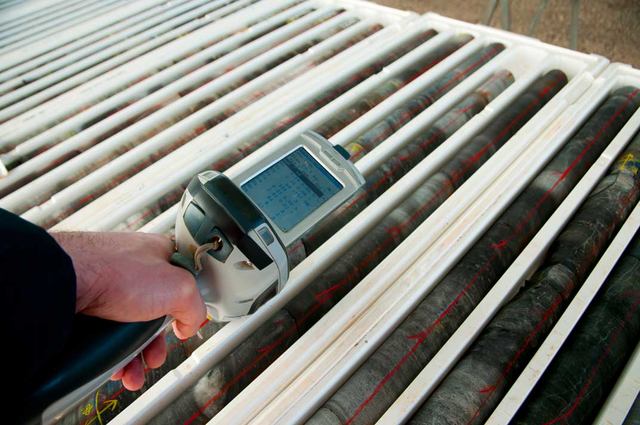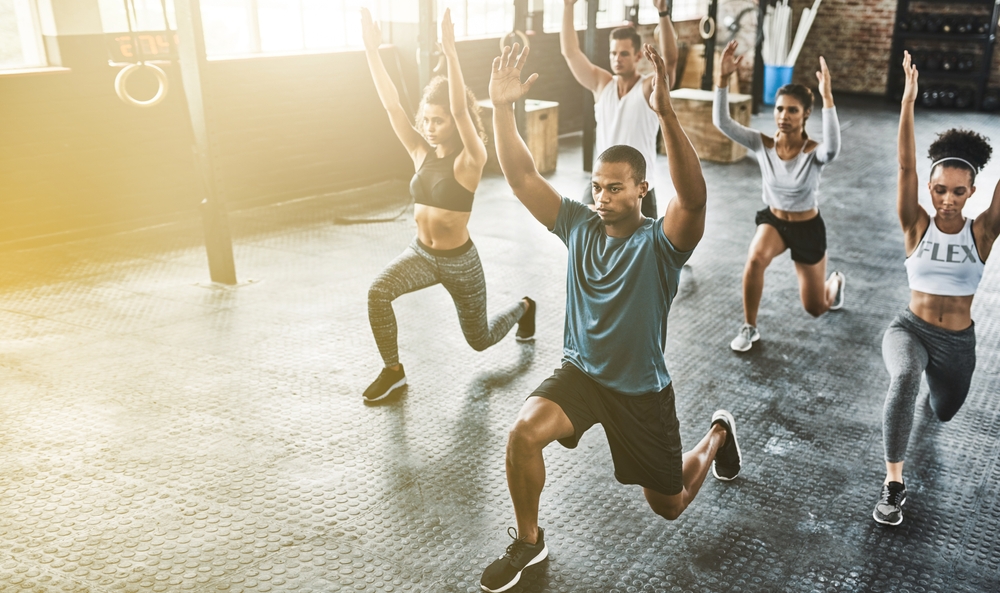
Introducing CELLIANT XRF Fabric Testing
May 01, 2025 – The pursuit of continual improvement has led us to adopt a powerful new method of analysis for CELLIANT-powered fabrics: X-Ray Fluorescence (XRF) Testing…

Understanding metabolic rate is important because it plays a key role in energy levels and overall well-being. While metabolic rate varies between individuals due to factors like genetics, age, and muscle mass, it can also be influenced by lifestyle choices such as diet and physical activity. By knowing more about how metabolism works, you can make more informed decisions about your health, fitness and energy balance.
Metabolic rate refers to the amount of energy, measured in calories, that your body uses to perform essential functions such as breathing, circulating blood and nutrients in the body, regulating body temperature, and cell recovery. Essentially, it’s the energy required to keep your body functioning while at rest. This is commonly known as your Basal Metabolic Rate (BMR). BMR accounts for a significant portion of your total daily energy expenditure, around 60-75%, even when you’re not engaging in physical activity. It’s the minimum energy your body needs to maintain vital processes.
Closely related is one’s Resting Metabolic Rate (RMR), which includes the energy used for simple daily movements, like sitting or standing. Together, BMR and RMR form the foundation of your body’s energy consumption, but they don’t tell the whole story. In addition to the energy burned at rest, your body uses calories for digesting food and physical activity. This combined total is referred to as Total Daily Energy Expenditure (TDEE).
Metabolic rate is influenced by a combination of physiological and external factors, each of which plays a role in how efficiently your body uses energy. While some of these factors are out of our control, others can be modified to influence metabolism.
Age is one of the primary physiological factors affecting metabolic rate. As we age, our metabolism naturally slows down, partly due to a decrease in muscle mass and hormonal changes. For example, hormone levels, particularly thyroid hormones, directly influence how fast or slow our metabolism runs.
Muscle mass is a major determinant of metabolic rate. The more muscle you have, the more energy your body burns at rest. Even when you’re not actively exercising, muscles require more energy to maintain than fat.
Hormones, particularly those related to the thyroid, insulin, and growth hormone, can either speed up or slow down your metabolism. A well-functioning thyroid gland keeps the body’s metabolic processes running smoothly, while imbalances in hormones like insulin can affect how efficiently your body uses energy.
Beyond physiology, several external factors can influence metabolic rate. For example, diet plays a key role, particularly when it comes to the types of foods consumed and their effect on thermogenesis (the production of heat in the body). Protein, for instance, requires more energy to digest than fats or carbohydrates, creating a temporary boost in metabolism.
Exercise is another critical external factor. Physical activity, especially high-intensity exercises or strength training, can increase metabolic rate both during the workout and for hours afterward. This is because exercise creates a “demand” for energy that the body must fulfill by burning more calories. Metabolism, in general, requires a demand from the body—whether it’s a conscious demand like exercise or a passive one like heart function. Even at rest, essential processes like breathing, circulation, and cell repair consume energy. Today, let’s take a deeper look at the relationship between metabolic rate and exercise.
Exercise and metabolism are deeply interconnected, with each influencing the other in significant ways. When we exercise, our body requires more energy to fuel muscle activity, which leads to an increase in metabolic rate. The more intense the exercise, the greater the demand for energy, and as a result, the body burns more calories during and after the workout. This is why physical activity is often one of the most effective ways to boost metabolism in the short term.
During physical activity, especially aerobic or strength-training exercises, the body taps into energy reserves to power movement. This increased energy demand causes the metabolism to speed up. High-intensity exercises, such as interval training or weightlifting, can create an “afterburn effect” known as excess post-exercise oxygen consumption (EPOC). This means your body continues burning calories at an elevated rate even after the workout has ended, as it works to restore oxygen levels and repair muscles. This metabolic boost can last for hours after exercise, depending on the intensity and duration of the workout. Over time, regular exercise can have a more sustained impact on metabolic rate.
Exercise efficiency refers to how effectively your body uses energy during physical activity. The more efficient your exercise routine, the better your body becomes at converting nutrients into usable energy, which can, in turn, affect your metabolism. Efficient exercise allows you to perform at higher intensities for longer durations, which stimulates metabolic activity.
More efficient exercise also improves your body’s ability to use oxygen, also known as aerobic efficiency. When your muscles become more efficient at oxygen uptake, they can work harder without fatiguing as quickly. This allows you to engage in longer and more intense workouts, which boosts metabolic rate both during and after exercise.
Exercise efficiency also plays a role in how quickly your body recovers after a workout, which can further influence metabolism. The more efficient your body becomes at exercise, the faster it can recover from muscle fatigue. Efficient recovery supports higher workout frequencies, allowing you to exercise more often without overloading the body.

You can absolutely increase exercise efficiency, and doing so can have an impact on both your performance and metabolism. Exercise efficiency isn’t just about working harder—it’s about training smarter. By incorporating different strategies and solutions into your wellness and fitness routines, you can help your body become more effective at using energy, leading to better performance, boosted endurance, and faster recovery from physical fatigue. Some of these strategies include:
In particular, we will explore the potential of infrared light to impact exercise efficiency.
Infrared light therapy has gained attention for its potential to enhance exercise efficiency through its ability to increase local circulation and cellular oxygenation. During exercise, muscles require a constant supply of oxygen to maintain performance, and the increased blood flow derived from contact with an infrared light source supports this demand.
By enhancing local circulation, infrared light has been clinically demonstrated to support strength, endurance and stamina, so that you are able to exercise for longer periods without tiring as quickly. Infrared light also has a direct impact on cellular oxygenation, meaning that your muscles are better equipped to sustain energy production during physical activity. These increases also aid in faster recovery to help you bounce back from post-exercise fatigue.
While many people thing of a traditional power source when they think about infrared light, such as an IR lamp or infrared sauna, textile-based infrared innovations are rising in popularity due to their ability to fit seamlessly into any routine. For example, CELLIANT® is the leading infrared textile technology, acting as a wellness ingredient when incorporated into textile applications ranging from athleticwear and athleisure, to sleepwear, bedding and more. For those seeking to boost athletic performance and exercise efficiency, CELLIANT baselayers and athleticwear are an ideal fit due to their ability to increase grip strength.

These results support the science behind infrared’s potential to impact exercise efficiency, and warrant further research to explore these effects in additional contexts, including in relation to metabolic rate.
If your brand is seeking to re-imagine your performance products with infrared innovation, reach out to our team by filling out the form below to discuss how CELLIANT can differentiate your brand.
1Gordon, I. L., Casden, S., Vangel, M., & Hamblin, M. R. (2019). Effect of Shirts with 42% Celliant® Fiber on tcPO2 Levels and Grip Strength in Healthy Subjects: A Placebo-controlled Clinical Trial. Journal of Textile Science & Engineering. https://celliant.com/wp-content/uploads/2020/09/Effect-of-Shirts-with-42-Celliant%C2%AE_web.pdf


May 01, 2025 – The pursuit of continual improvement has led us to adopt a powerful new method of analysis for CELLIANT-powered fabrics: X-Ray Fluorescence (XRF) Testing…

February 21, 2025 – Photobiomodulation (PBM), sometimes referred to as low-level light therapy, is a form of light therapy that uses specific wavelengths of red and near-infrared…

June 02, 2025 – Team CELLIANT is thrilled to announce the launch of its very own Infrared Dream Pillow, along with our new Shopify website where you can purchase all things IR technology!
To access all of our reports please input your email below.
Contact us at marketing@celliant.com
Thank you for your request. Please download the brochure below.
Sign up for the latest Celliant news and innovations.
REQUEST INFORMATION